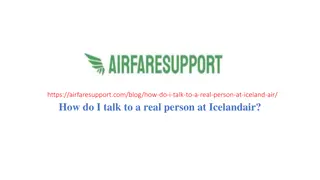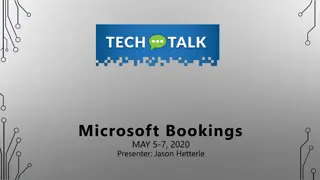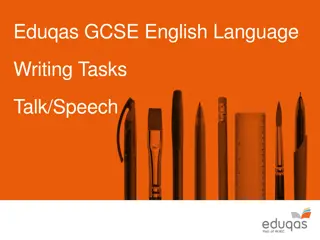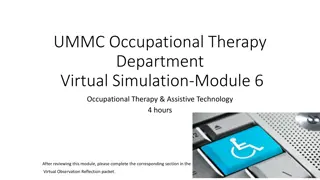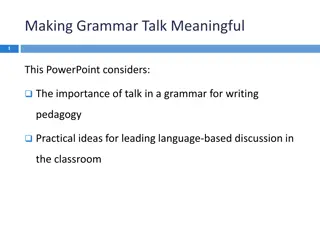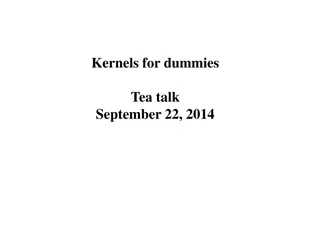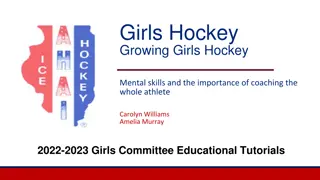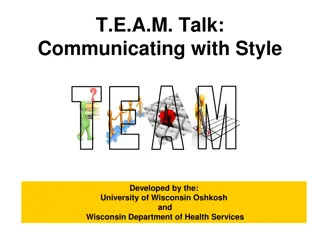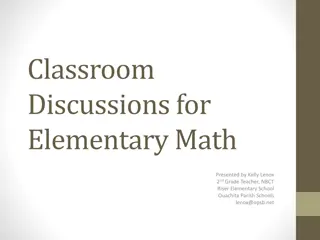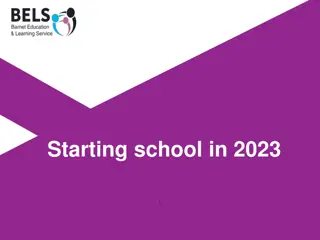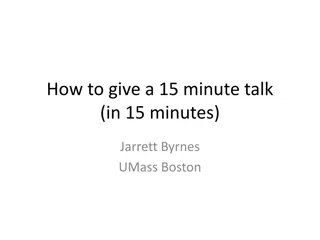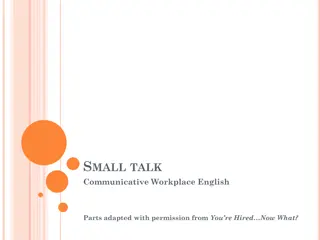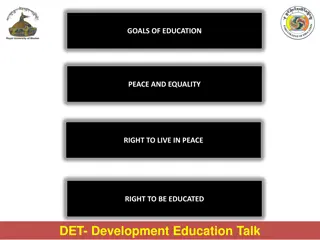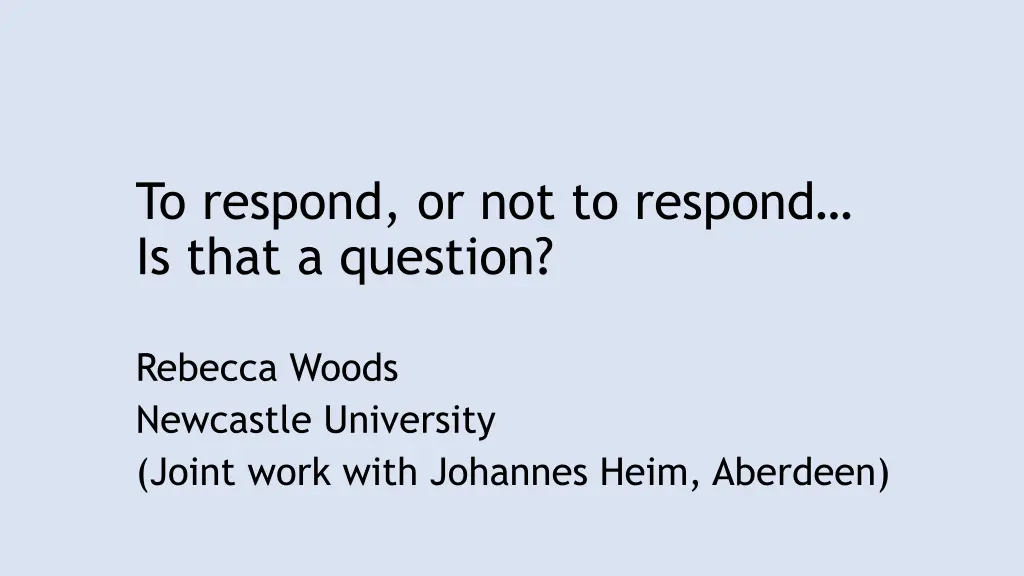
Child Speech Development Study
Explore a longitudinal case study on the acquisition of morphosyntactic and prosodic cues in child speech acts, focusing on how children use cues in British English relative to adult targets. Meet Teddy, a monolingual child from Newcastle-upon-Tyne, exhibiting unique speech patterns. Join the investigation to understand the development of speech acts in child English.
Download Presentation

Please find below an Image/Link to download the presentation.
The content on the website is provided AS IS for your information and personal use only. It may not be sold, licensed, or shared on other websites without obtaining consent from the author. If you encounter any issues during the download, it is possible that the publisher has removed the file from their server.
You are allowed to download the files provided on this website for personal or commercial use, subject to the condition that they are used lawfully. All files are the property of their respective owners.
The content on the website is provided AS IS for your information and personal use only. It may not be sold, licensed, or shared on other websites without obtaining consent from the author.
E N D
Presentation Transcript
To respond, or not to respond Is that a question? Rebecca Woods Newcastle University (Joint work with Johannes Heim, Aberdeen)
My collaborators Johannes Heim Transcribers 2021-22 Keira Carr, Lauren Gladwell, Rachel Mabbs 2022-23 Caitlin Kittridge, Alice Wood, Luyang Zhou 2
Aims of this talk Investigation of acquisition of morphosyntactic and prosodic cues associated with questions in British English Which cues do children use? How do they use them? (On their own terms; relative to adult target) How do they come to do this? What aspects of their experience influence this? A novel longitudinal case study in the service of determining how speech acts develop in child English 3
Roadmap Introduction to the case study/data Background on production and comprehension of speech acts Background on production/comprehension of question cues Research Questions Morphosyntax: Child and Adult Data Speech Acts: Child and Adult Data Prosody: Child Data Test questions as a case study (within this case study) 4
Introducing our case study: Teddy A first child, growing up monolingually in Newcastle-upon- Tyne, in North East England Early years: at home with parents until 1;9 Includes first Covid lockdown (1;4-1;9) Subsequently: attends a childcare setting 3 days per week, other 4 days at home with parent(s) and younger brother Diary data and spontaneous recordings All spontaneous interactions with father recorded at home Transcribed to date: 2;3-2;6, 5213 utterances in input, 2731 in output No evidence of neurodivergence (currently 4;7) 5
Introducing our case study: Teddy An unusual feature of Teddy s speech = Overextension of auxiliary-initial utterances to non- question acts (6) Context: Teddy puts Mum s slippers onto Mum s feet Can I put Mummy s slippers on (7) Gate s closed we can t get out (8) A bee! I can see a bee [Bee disappears]Can t I see the bee (9) I made a sandwich. Can you eat it ? Teddy, 2;4 Teddy, 2;4 Teddy, 2;5 Teddy, 2;7 All diary data 6
Hes not the only one Paddy (first child, Sheffield, early talker, neurotypical) Context: Looking at pictures of a recent day out and talking about the events of that day CHI: and xxx uh is there a green one and there's the red one ! Paddy, 2;6 7
Background: Production of speech acts Snow, Pan, Imbens-Bailey and Herman (1996) Cross-sectional study of 100 US English children (14, 20, 32 months) Used INCA-A coding system (Ninio and Wheeler, 1984), informed by speech act theory (Searle 1969 i.a.) and sociology of interaction (Goffman 1974) At 14 months, children s communicative intents are largely unclear (up to 70%) and show high individual variation Point in common: requesting information is rare Requests for information or for action using conventional interrogative structures only seen at 32 months Bergey, Marshall, DeDeo and Yurovsky (2021) Hidden Topic Markov Model (unsupervised) on North American CHILDES Around 24 months, the range (diversity) of speech acts expressed by children mirrors the range of adults 8
Background: Comprehension of SAs Shatz 1978: children respond appropriately to questions-as- requests from before age 2 They re not doing subtle inference; they re responding to most utterances with action Shatz 1979: children hear a range of uses of interrogative cues, irrespective of their linguistic sophistication 44% of utterances addressed to 18-34 month olds were questions Of these, around 35% were test questions Around 5% were requesting information Multiple syntactic frames used for each function, though some characteristic patterns emerge Not clear how heuristics or routines scaffold linguistic analysis 9
Background: Comprehension of SAs Computational-modelling approach (Yang 2022) Given morphosyntactic knowledge of an 18 month old, a supervised learner can group English clause types and map to canonical speech acts if it is pragmatically informed without apparent need of/recourse to prosodic information Issues and remaining questions What pragmatic information is useful to the child, and when can they access it? Was prosody partly built into the pragmatics in this model? 10
The features of question frames Morphosyntax Auxiliary presence/position Presence of wh-word Prosody Intonational contour 11
Background: Features of questions Auxiliaries Emerge medially first; acquisition boosted by polar questions in input (Gleitman et al 1984) but only from 24 months of age Are early child hypotheses superficial, or do they ignore auxiliaries for a reason? Formal distinction (head turn preference) of AuxS<>SAux at 12 months (Geffen & Mintz 2015) Anticipation of speaker change (eye-gaze) after question turns more likely than after non-question turns at 24 months (Casillas and Frank 2017) Differential acquisition: modal auxiliaries emerge later (Stromswold 1990) 12
Whats already been said? Q-features Wh-words What, where > who > when, why, how (e.g. Tyack & Ingram 1977) Intonation contours Polar questions: Preferential looks to knowledgeable interlocutor at 18 months (Goodhue et al 2023) Rising contour on declaratives = question-like interpretation in behavioural paradigm (Goodhue et al 2021) 13
Gaps to fill Combined investigation of acquisition of specific morphosyntactic cues (not just constructions/frames) and how they are used in input and output Prosodic data also often not included but without conflating prosody-syntax or prosody-pragmatics Longitudinal investigation of speech acts used by paired child- caregiver Accidental advantage of Teddy corpus: in the seemingly crucial 14-24 month stage, Teddy s input almost *exclusively* his parents (due to Covid lockdown restrictions) 14
Current research questions RQ1: Which morphosyntactic cues for questions is Teddy producing at 2;3-2;6? RQ2: How is he using them (grammatically and pragmatically), and how does this compare with his input? RQ3: What can the above tell us about the acquisition of speech-act related morphosyntax, and of speech act categories? 15
Morphosyntax Aux-S 15 S-Aux 50 Both 1 Total utterances 2731 5213 Auxiliaries (without wh) 56 2.5% 1574 30.1% - Wh-words Teddy Caregiver 49 (4) 1.8% Caregiver (2;2;29-2;3,25) 2169 516 23.8% 223* (138) 10.2% (n) = with aux *6 in situ 265 Aux-S 251 S-Aux 16
Speech act annotation: methods and notes Initial coding takes into account: Prosody Preceding context Response from interlocutor Additional metacommentary from caregiver 17
Speech act annotation: methods and notes Categories in this presentation simplified from INCA-A (Ninio and Wheeler 1984 and subsequent work); question- type categories more refined in line with Shatz (1979) To flag: narration includes active listening , co-action description, and non-addressed questions within games For future work: Online experiment with adults coding for clear and edge cases Speech acts InformationQ (RQ, YQ, TQ) Request/command (RP) Offer Test Non-interactive (TX) Checking understanding Rhetorical Narration (RT, SI, DC, DP, XA) Suggestion (RQ) Exclamation (ET, EN, ES) Who knows Request to confirm Assertion (ST) Confirmation (AA) Agreement (AP) Fragment Other Embedded Unclear 18
Wh-words: uses Teddy 24 13 % Caregiver 90 (1) 78 20 13 (5) 7 5 3 2 2 2 1 223 % 40 35 9 6 3 2 1 <1 <1 <1 <1 InformationQ Test Non-interactive Checking understanding Rhetorical Narration Suggestion Who knows Fragment Unclear Request to confirm TOTAL 50 27 10 1 20 2 1 2 49 19
Aux-S structures: uses Teddy % Caregiver 73 37 29 27 27 13 13 12 8 % 28 14 11 10 10 5 5 5 3 Suggestion InformationQ Request to confirm Test Narration Non-interactive Request/command Check own understanding Offer Assertion Unclear Rhetorical Other TOTAL 2 13 4 26 2 13 5 2 33 13 2 2 22 265 <1 <1 8 20 15
S-Aux structures: uses Teddy 41 % Caregiver 135 55 18 10 9 3 3 2 2 % 54 22 7 4 4 1 1 <1 <1 Assertion Non-interactive Confirm Command Agree Suggestion Test Narration Exclamation Fragment Embedded TOTAL 82 7 1 1 14 2 2 14 251 6 50 21
The role of pragmatics SAux in Teddy s input AuxS in Teddy s input Use Assertion Confirmation Agreement Command/ Request Suggestion # 435 (61.8%) 39 19 19 Use Information Q Suggestion Narration Clause # 166 161 122 Use Assertion Narration Request for confirmation Agreement Request to engage Tag # 78 32 29 (26.3%) (25.5%) (19.3%) (39.2%) (16.1%) (14.6%) (5.6%) (2.7%) (2.7%) Test Command/ Request 87 36 (13.8%) (5.7%) 23 19 (11.6%) (9.5%) 11 (1.6%) (NB: only 38 tags in the first month) 22
Some notes on Teddys auxiliaries Hears 13 types (DO, HAVE, can, shall ) All in SAux, 10 in AuxS Uses 7 types (DO, BEaux, can, will, BEcop, might, have) 3 in SAux only (will, might, have) 2 rules AuxS seems linked to specific auxiliaries SAux could, but doesn t specialise Structures partially map to speech acts SAux = Assertive AuxS = Assertive or requires response 23
Interim summary Wh-words Principally used for infoQs by both child and caregiver Also used to test by both child and caregiver Some use by child in narrative contexts Overwhelmingly used initially Child often omits auxiliary, both in infoQs and narration (caregiver does not) 24
Interim summary Aux-S structures Vastly more frequent in caregiver speech Most common use by caregiver = suggestion, followed by informationQ Then a bag of uses in which adult knows or suspects the answer (test, request to confirm, narration) Most common use by child = assertion 25
Interim summary S-Aux structures Caregiver use = 54% assertion, 22% non-interactive book reading Overlap with AuxS = 3 suggestions, 2 tests, 2 narration Child use = >80% assertion by child, plus some narration Overlap with AuxS in both categories In both SAux and AuxS structures there is evidence for consistency across the recording period 26
Interim summary How does this compare with past literature? In line with no/low use of questions by children under 32 months (Snow et al 1996) In line with high variety in use of question forms by parents (Shatz 1979) But here, high use of test forms not linked to lab situation Extends knowledge of what a young child might do with question and non-question forms (specifically utterances with auxiliaries and/or wh-words) In particular they can use them for non-information-seeking Qs too 27
The long view While Teddy s auxiliaries now (4;7) generally map to the adult grammar, remnants of inversion remain: Context: Watching MOT scooping refrozen ice cream out a tub CHI: Is it stiff. It s very stiff tonight. MOT: Are you asking me if it is stiff, or are you telling me that it is stiff? CHI: I said it. It s very stiff tonight. Diary, 4;3 28
The long view While Teddy s auxiliaries now (4;7) generally map to the adult grammar, remnants of inversion remain: Context: CHI s little brother is given his favourite soft toy. CHI: When was I little, didn t I have a favourite teddy? Diary, 4;6 29
Prosody: methods and notes Child only at this stage Intonation contour coded impressionistically by two coders and checked instrumentally using Praat 30
Child use of intonational contour fall rise rise-fall level 13 Assertion Narration Request/command InformationQ Unclear Fragment Suggestion Test Exclamation 30 15 3 2 2 1 0 0 0 2 0 1 0 0 0 0 0 0 0 0 4 0 3 0 0 0 0 0 0 20 3 1 1 11 1 31
Child use of intonational contour fall rise rise-fall level 15 SAux AuxS WH-omitted auxiliary WH-fragment WH+clitic WH+full auxiliary Aux-S-Aux Unclear 30 11 17 5 2 0 0 3 0 0 0 0 1 0 0 0 0 0 0 1 3 1 1 0 0 0 4 14 4 1 1 32
Interim summary Intonational contours Overwhelmingly falling contours To be expected given lack of question structures Most variation in Assertions and Narration Perhaps unexpected, especially as no analogues for rising declaratives found in this dataset 34
Interim summary What does this mean for prosody in speech act acquisition? Not clear that prosodic contours map strongly onto speech acts in English child speech Could this mean that English children are not yet sure how to use prosody in speech act acquisition, though they are somewhat sensitive to it (cf. Goodhue et al 2021, Goodhue et al 2023) 35
Focus on testing questions Wh- and AuxS-test questions used by both child and caregiver Caregiver use in-line with Shatz (1979) to a point Frequent despite more naturalistic setting Not confined to wh-questions Child use perhaps surprising Typically used with falling contour Sometimes led to conversational confusion 36
Focus on testing questions Context: sensory play with rice, lentils and dump trucks CHI: what s THATs? FAT: how about Teddy CHI: piece of rice! FAT: a piece of rice oh that s not a surprising is it? Not a surprise. Teddy, 2;4,27 37
Focus on testing questions Farkas s 2022 Searle-inspired felicity conditions Canonical questions a. Speaker ignorance Sp doesn t know p b. Addressee competence Sp assumes Ad knows p c. Addressee compliance Sp assumes Ad will give p d. Issue resolution goal Sp s aim = settle {p, p} Test questions a. Speaker competence Sp knows p b. ?Addressee competence Sp doesn t assume Ad knows p c. ?Addressee compliance Sp can t assume Ad will give p d. Issue resolution goal Sp s aim = establish whether Ad knows {p, p} through raising {p, p} raising {p, p} Sp doesn t care if Ad knows p Sp doesn t expect Ad give p Sp s aim = engage Ad Sp aim = engage Ad through 38
Consider suggestion questions Farkas s 2022 Searle-inspired felicity conditions Canonical questions a. Speaker ignorance Sp doesn t know p b. Addressee competence Sp assumes Ad knows p c. Addressee compliance Sp assumes Ad will give p d. Issue resolution goal Sp s aim = settle {p, p} Suggestion questions a. Speaker preference Sp prefers that p b. Addressee competence Sp assumes Ad has opinion on p c. Addressee compliance Sp assumes Ad will give opinion d. Issue resolution goal Sp s aim = Ad(/Sp) enacts p 39
A bias against info-seeking questions? Evidence from Theory of Mind studies, attitude verb acquisition, that desires precede beliefs (Wimmer and Perner 1983, much work by Jill de Villiers) Also evidence that declarative syntax maps to representations, and non-declarative syntax to preferences (see Hacquard and Lidz 2019) Therefore, mapping interrogative syntax to information- seeking questions is, potentially, already pulling against children s cognitive biases 40
A bias against info-seeking questions? When non-declarative syntax maps in input to preferences and attempts to engage as well as attempts to inform representations about the world recognising an interrogative clause type becomes that much harder What about the typical case , where children (maybe) don t hear so many test/suggestion questions but still don t use infoQs? Potentially recognise the interrogative clause type but don t seek out information for independent reasons (still developing ToM) 41
The long view (again) Context: general discussion around dinner table, 4 adults and 4 children CHI: And why did Nicholas fall in the park? MOT: Because he slipped. CHI: Did he have his helmet on when he fell? MOT: Why are you asking that you know that he did. Are you telling us that he did? CHI: And did he have his helmet on when he fell? MOT: Yes, he did. Teddy, 4;5,06 42
Conclusions Some evidence that lexical markers of speech acts facilitate quicker acquisition Compare close mapping of speech acts with wh-words across child and caregiver with variation w.r.t auxiliary position Possible alternative explanation whQs twice as common between 12-24 months compared with 24-36 months (Zaitsu et al 2021) Children are sensitive early (<2 years) to pragmatics in the sense of speaker ignorance and issue resolution goals Feeds the hypotheses they might assign to aspects of morphosyntax that display apparent optionality Prosodic contours less influential But are other prosodic features useful, e.g. pauses (Yang 2022, i.a.)? 43
Conclusions Suggests importance of *not* abstracting across child-caregiver dyads (in urban, small-family settings) and may explain great variance in child speech act types found by Snow et al 1996 Considering child-caregiver interactions in terms of felicity conditions could help us tease apart where pragmatic- syntactic contingencies lie 44
Consequences Raises the question: do children s speech acts look very different in communities with higher rates of child-child speech? EDI issues in application: some children (unconsciously) trained very early on for school-style questioning what biases are built into education given homogeneity of teacher backgrounds compared with student demographics? 45
References Bergey, Claire A., Zoe Marshall, Simon DeDeo and Daniel Yurovsky. 2021. Learning communicative acts in children s conversations: a Hidden Topic Markov Model analysis of the CHILDES corpus, Proceedings of the Annual Meeting of the Cognitive Science Society 43. URL: https://escholarship.org/uc/item/12x8s3qp Casillas, Marisa and Michael C. Frank. 2017. The development of children s ability to track and predict turn structure in conversation, Journal of Memory and Language 92, 234-253 Farkas, Donka. 2022. Non-intrusive questions as a special type of non-canonical questions, Journal of Semantics 39, 295-337. https://doi.org/10.1093/jos/ffac001 Geffen, Susan and Toben H. Mintz. 2015. Can you believe it? 12-month-olds use word order to distinguish between declaratives and polar interrogatives, Language Learning and Development 11, 270-284. https://doi.org/10.1080/15475441.2014.951595 Gleitman, Lila R., Elissa L. Newport and Henry Gleitman. 1984. The current status of the motherese hypothesis. Journal of Child Language 11, 43-79 Goodhue, Daniel, Jad Wehbe, Valentine Hacquard and Jeffrey Lidz. 2021. The effect of intonation on the illocutionary force of declaratives in child comprehension. In Patrick G. Grosz, Luisa Marti, Hazel Pearson, Yasutada Sudo and Sarah Zobel (eds), Proceedings of Sinn and Bedeutung 25, 307- 324. Goodhue, Daniel, Valentine Hacquard, and Jeffrey Lidz. 2023. 18-month olds understand the links between declaratives and assertions, and interrogatives and questions. BUCLD 47. https://lingbuzz.net/lingbuzz/007114 46
References Hacquard, Valentine and Jeffrey Lidz. 2019. Children s attitude problems: bootstrapping verb meaning from syntax and pragmatics, Mind and Language 34(1), 73-96. DOI: https://doi.org/10.1111/mila.12192 Ninio, Anat and Polly Wheeler. 1984. A manual for classifying verbal communicative acts in mother- infant interaction. In Working Papers in Developmental Psychology No.1, Jerusalem: The Martin and Vivian Levin Center, Hebrew University Shatz, Marilyn. 1978. Children s comprehension of their mothers question-directives, Journal of Child Language 5, 39-46 Shatz, Marilyn. 1979. How to do things by asking: form-function pairings in mother s questions and their relation to children s responses, Child Development 50(4), 1093-1099 Snow, Catherine E., Barbara Alexander Pan, Alison Imbens-Bailey and Jane Herman. 1996. Learning to say what one means: a longitudinal study of children s speech act use, Social Development 5(1), 56-84. Stromswold, Karin. 1990. Learnability and the acquisition of auxiliaries, PhD dissertation, MIT Tyack, Dorothy and David Ingram. 1977. Children s production and comprehension of questions, Journal of Child Language 4(2), 211-224 Yang, Yu an. 2022. Are you asking me, or are you telling me? Learning clause types and speech acts in English and Mandarin. Doctoral dissertation, University of Maryland Zaitsu, Anissa, Jad Wehbe, Valentine Hacquard and Jeff Lidz. 2021. Clause types and speech acts in speech to children. Proceedings of Experiments in Linguistic Meaning 1: 284-297. URL: http://journals.linguisticsociety.org/proceedings/index.php/ELM/article/view/4886/4727 47
Examples of child acts Assertion Request/command Narration InfoQ Suggestion Test Exclamation 2;03;20 Coco might be broken. 2;03,09 Daddy can we do it again? 2;03,09 Are we go find it! 2;04,23 My door up so I can fix it 2;05,16 Was there baby chip? 2;04,13 How about a lion? 2;05,24 What that. 2;04,27 What do back hoe (.) what do bulldozer eat? 2;05,27 There he is! 48
Eve (Brown Corpus) Input Auxiliary SHALL BEaux WOULD BEcop SHOULD DO HAVE WILL CAN COULD MAY MUST MIGHT Grand Total Subtotal 37 453 162 1270 19 1415 36 144 324 11 85 18 1 3975 %AuxS 95 86 77 63 63 58 47 39 32 27 19 6 0 60% 49
Eve (Brown Corpus) Input Output Auxiliary SHALL BEaux WOULD BEcop SHOULD DO HAVE WILL CAN COULD MAY MUST MIGHT Grand Total Subtotal 37 453 162 1270 19 1415 36 144 324 11 85 18 1 3975 %AuxS 95 86 77 63 63 58 47 39 32 27 19 6 0 60% Subtotal 8 44 3 182 0 113 71 51 152 3 11 0 0 638 %AuxS 25 68 0 38 0 18 8 12 9 0 27 0 0 24% 50


